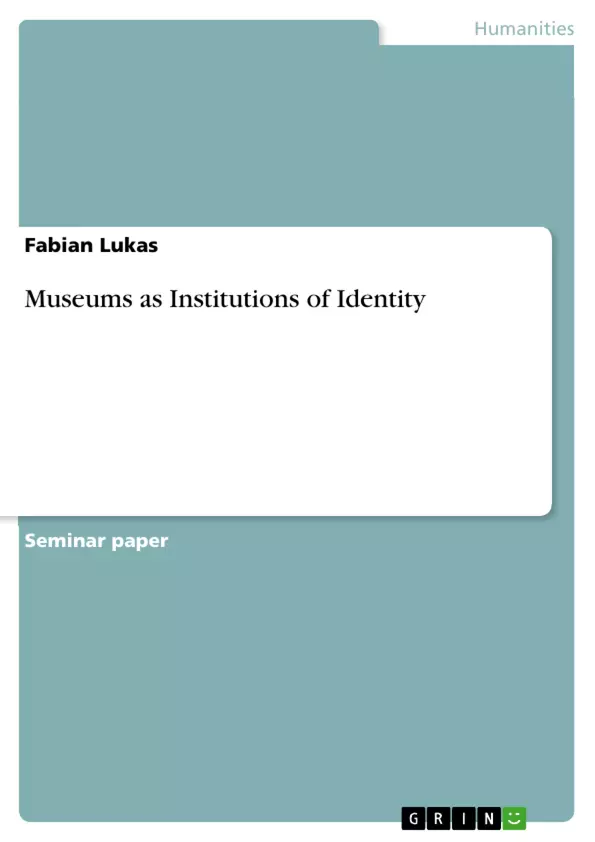Museums are cultural, educational and civic centers of communities. In the past museums served only a small group of people. Furthermore a lot of the museums in the past saw their mission in lecturing and educating their visitors with the exhibition of objects. But the role of museums has changed in the last years. Due to demographic changes in the societies the
museums serve, they are now in a situation where they have to compete with other institutions like zoos or cinemas. Potential visitors can choose nowadays how to spend their leisure time.
In order to further guarantee financial income a lot of museums have adapted strategies of the areas of business and economy. The developed marketing strategies and frameworks to measure success and accountability.
But even more important are the changes museums made and are still making regarding to their mission and their interaction with the surrounding community. Museums nowadays are moving away from the old habit of teaching their visitor in a static and lecturing way. Instead they focus on aspects like participation and the involvement of their visitors. Additionally they began to outreach for other institutions like schools or universities to provide a worthy educational experience for both sides. The present museums must reflect the voices, needs and interests of the communities they serve, in order to survive.
Therefore museums are evolving away from being isolated islands of teaching to places of gathering and exchange. They become forums that not just display objects but also invite discussions, evoke concerns and foster ideas like critical thinking within their community. It is obvious that the way how museums interact with their community has become broader and not necessarily easier to articulate. But what are communities? Usually a community is a group of people that shares a physical space like a room, a city or a country. Furthermore a community can also share certain traits, characteristics or ideals. Communities can interact which each other and establish a certain social identity. It becomes visible that communities are not closed entities, they are open constructs that are connected with other communities in various ways.
Inhaltsverzeichnis (Table of Contents)
- Introduction
- The Ben M'sik Community Museum
- History of Museums in Morocco
- The BMCM in Casablanca
- Southwestern Pennsylvania and the Ruhr Valley
- Museums in the Gulf Region
Zielsetzung und Themenschwerpunkte (Objectives and Key Themes)
This paper explores the impact of museums on the identity of communities. It examines how museums can serve as platforms for understanding, celebrating, and preserving the cultural heritage of diverse populations. The paper utilizes three case studies to illustrate these concepts.
- The evolving role of museums in contemporary society
- The importance of museums in reflecting and engaging with the communities they serve
- The relationship between museums and identity formation
- The significance of museums in promoting cultural heritage and understanding
- The impact of social and economic changes on museums and their communities
Zusammenfassung der Kapitel (Chapter Summaries)
The introduction establishes the evolving role of museums in society, highlighting their transition from static institutions to dynamic centers of community engagement. It emphasizes the importance of museums in reflecting the needs and interests of their communities to ensure their survival and relevance.
The chapter on the Ben M'sik Community Museum in Morocco explores the concept of museums as institutions of identity. It examines the historical context of museums in Morocco and the challenges they faced in engaging local communities. The BMCM is presented as a successful example of a museum that actively promotes and interprets the stories of its diverse neighborhood.
Schlüsselwörter (Keywords)
Museums, community, identity, cultural heritage, engagement, participation, social change, Morocco, Ben M'sik Community Museum, Casablanca, Cities without Slums.
- Citar trabajo
- B.A. Fabian Lukas (Autor), 2015, Museums as Institutions of Identity, Múnich, GRIN Verlag, https://www.grin.com/document/321388



